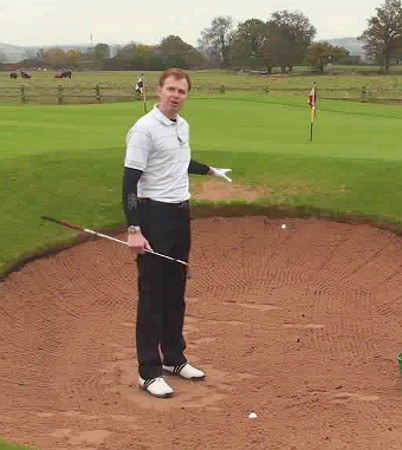
When weighing up the options a player has out of a bunker, they must first realise a sand trap is classed as a hazard.
Like water hazards, bunkers have a different set of rules when compared to normal shots from the fairway or rough. This means you have options and don’t always have to play the ball as it lies.
Things you can’t do
Because of a bunker’s status as a hazard, there are certain things golfers definitely cannot do when they find themselves in a sand trap.
Players cannot ground their club or touch the sand with their hands before striking the shot. There are only a couple of exceptions to this including supporting yourself in case of a fall. After the ball has been struck, the golfer can touch the sand as much as they want, giving the bunker a good rake, for example.
Because the bunker is a hazard, there are certain objects that cannot be moved even if they are interfering with your next shot. These objects are classed as loose impediments and cannot be moved. An example would be finding your ball in the bunker nestled amongst some leafs, because these are loose impediments in a hazard they cannot be moved, unless the golfer wishes to incur a two stroke penalty. Other loose impediments which cannot be moved include twigs, dung, snow, natural ice and worm casts.
In bunkers, there is an exception with stones. Because stones could pose a risk to the golfer if struck, these can be removed without penalty. This is not an official position with the game’s governing bodies but is covered under a golf course’s ‘local rules’ which are usually found displayed around the club house or on the back of a scorecard.
Other things which may be moved in bunkers include any living or dead animals, so if the golfer stumbles across a lion escaped from the local zoo, they are free to move it from the sand, if they wish!
Unplayable lie
Golfers can deem their ball to have an unplayable lie anywhere apart from a water hazard. This means if a golfer is particularly worried about a particular bunker shot they have a number of options in taking a penalty drop.
1. Rule 28a: Play a ball as near as possible from where the previous stroke was last played. This is often referred to as “stroke and distance.” (See Rule 20-5)
2. Rule 28b: Drop a ball behind the point where the ball lies, keeping that point directly between the hole and the spot on which the ball is dropped. However, the ball must be dropped back into the bunker; the player cannot drop outside the bunker.
3. Rule 28c: Drop a ball within two club lengths of and not nearer the hole than where the ball lies. Again this must be in the bunker.
These are the same rules when taking an unplayable lie outside a bunker with the added exception that the ball must be dropped back into the hazard. Golfers should learn these rules and understand how to apply them during tournament play; they could help save several shots.






